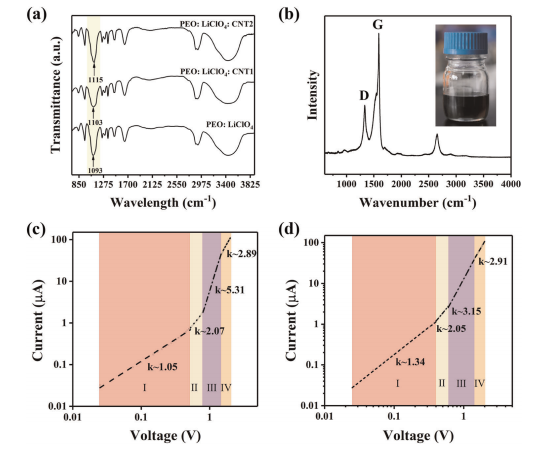文章专利

- 地址: 江苏省苏州市苏州工业园区若水路398号
- 邮箱: tzhang2009@sinano.ac.cn
- 电话: 86-512-62872706
- 传真: 0512-62603079
- 网址: http://nanosensor.sinano.ac.cn

Bio-inspired flexible artificial synapses for pain perception and nerve injuries. npj Flexible Electronics, 2020, 4(1): 1-8.
Qifeng Lu, Fuqin Sun, Lin Liu, Lianhui Li, Mingming Hao, Zihao Wang and Ting Zhang*

Abstract
Imitation of the perception system of living creatures is of great importance for the construction of artificial nerves and intelligent human-machine interfaces. However, a prominent challenge is to emulate the functions of the biological synapse, which is the basic building block of the neural system. Here, inspired by the pain perception mechanism of the living creatures, a flexible double-layer memristor was constructed, with 90% semiconducting single-wall carbon nanotubes (s-SWCNTs) covered by LiClO4 doped polyoxyethylene oxide (PEO: LiClO4) as the channel materials. The carriers (protons and Li+) from PEO: LiClO4 imitated the functions of Na+ and K+ in biological systems. A potentiation of the post-synaptic signal was observed with mild stimuli, while the post-synaptic signal was inhibited with severe stimuli with a pulse voltage larger than 1.4 V in this research. These behaviors resemble the sensation of pain, neuroprotection, and possible injuries to the neural system. To explore the underlying mechanism of the phenomenon, the fourier-transform infrared spectroscopy (FTIR), X-ray photoelectron spectroscopy (XPS), Raman spectrum, and current (IV) sweep were carried out. It was inferred that the observed results are attributable to the interaction between carriers in PEO: LiClO4 and functional groups and defects in the s-SWCNTs. The enhanced channel current results from the fulfillment of the traps by the carriers, and the suppression of the current is due to the intercalation of Li+ in the s-SWCNTs. This flexible artificial synapse opens a new avenue for the construction of biocompatible electronic devices towards artificial intelligence systems.
Full Article:https://www.nature.xilesou.top/articles/s41528-020-0066-0
